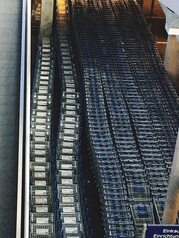The synergy between location and lifestyle in real estate investment

Location and lifestyle are two fundamental pillars in real estate investment, especially when evaluating options between rural and urban environments. In a country like Costa Rica, where geographical diversity translates into different development opportunities, understanding how these factors interact can make the difference between a successful investment and one that is not. This article will explore how the synergy between location and lifestyle influences property value, helping you make informed decisions to maximize your investment.
The strategic importance of location in the real estate market
Location in the real estate market is a determining factor that not only influences property values but also affects the quality of life of its inhabitants. In urban environments, for example, proximity to essential services such as schools, hospitals, and shopping centers can significantly increase housing demand. This, in turn, translates into greater appreciation for investors looking to maximize their returns. In contrast, rural locations may offer tranquility and natural spaces that attract those seeking a more relaxed lifestyle, although they often require a more careful assessment regarding access to infrastructure and services.
Additionally, location also determines the demographic profile of an area. Urban areas tend to attract young professionals and families who prioritize mobility and access to recreational activities, which creates a vibrant and dynamic ecosystem. On the other hand, rural areas may draw the attention of retirees or individuals looking to disconnect from the fast pace of the city. This diversity in the type of residents directly impacts the supply and demand of the local real estate market, making the strategic choice of a location not only an economic aspect but also socially relevant for developing sustainable and prosperous communities.
2. Advantages of urban lifestyle: convenience and accessibility
The urban lifestyle offers a number of advantages that make it particularly appealing for those looking to invest in real estate. Convenience is one of the main benefits; cities often have a well-developed infrastructure that includes efficient public transportation, access to essential services such as supermarkets, hospitals, and schools, as well as a wide range of entertainment and culture. This proximity to vital resources not only enhances the quality of life for residents but can also increase property value by attracting tenants and potential buyers who value convenience.
On the other hand, accessibility is a key factor in urban areas. Properties located in central or strategically positioned areas tend to have consistent demand due to their proximity to workplaces and recreational activities. This translates into greater stability in the real estate market and significant potential for long-term appreciation. Additionally, the urban lifestyle promotes a sense of community and dynamism that attracts both young professionals and families, creating a vibrant environment where opportunities are abundant and diverse.
3. Rural charm: tranquility and connection with nature
Rural charm becomes a magnet for those looking to escape urban hustle and connect with nature. Properties located in rural settings offer a more relaxed lifestyle, where fresh air, idyllic landscapes, and tranquility are part of daily life. In this context, real estate investments not only represent a financial opportunity but also an option for those who wish to establish a home where serenity and well-being take center stage. Such environments encourage outdoor activities, promoting an active lifestyle that can be very appealing to families and professionals who value quality of life.
Additionally, living in rural areas allows homeowners to enjoy a more close-knit community, where interpersonal relationships tend to be warmer and more intimate. The connection with nature not only enhances mental and physical health but also contributes to the sustainable development of these areas. By investing in rural properties, buyers have the opportunity to engage in ecological or agricultural projects that promote a balance between development and conservation. Ultimately, rural charm not only translates into a solid investment; it represents a way of life that prioritizes individual and collective well-being, thus becoming a significant added value in any real estate decision.
4. Cost comparison: living in urban vs rural areas
When comparing the costs of living in urban versus rural areas, it is essential to consider not only property prices but also other associated factors that can influence quality of life and long-term profitability. In urban areas, although purchase or rental prices tend to be higher, immediate access to services such as education, health, and entertainment is provided. This can translate into greater demand from tenants or buyers seeking convenience and job opportunities. However, additional expenses such as transportation and the overall cost of living tend to be higher in these areas, which can affect the perception of the actual value of the investment.
On the other hand, living in rural areas generally involves lower initial costs for both acquiring properties and maintaining them. The lots are larger and more accessible, allowing for a more relaxed lifestyle connected to nature. However, it must be considered that services and infrastructure may not be as developed as in cities, which could result in additional expenses related to transportation to urban centers where these services are located. When evaluating both options, it is crucial to weigh not only the immediate prices but also how each environment aligns with your long-term personal and financial goals.
5. The growing demand for sustainable properties in rural areas
The growing demand for sustainable properties in rural areas is a trend that has gained momentum in recent years. Increasingly, buyers are looking for not just a place to live, but also a lifestyle that aligns with their values and environmental concerns. Properties that incorporate sustainable practices, such as the use of renewable energy, water collection systems, and eco-friendly construction, have become focal points for those wishing to minimize their environmental footprint while enjoying the tranquility of the rural setting. This connection between sustainability and a healthy lifestyle is driving many to reconsider their real estate options.
Additionally, rural areas offer a unique experience that combines nature and community. The possibility of living in an environment where organic agriculture, the conservation of natural resources, and respect for the environment are valued attracts a new type of investors who prioritize not only economic profitability but also personal and social well-being. This interest in sustainable properties not only benefits individual buyers; it can also boost local economic development by promoting green initiatives and creating jobs related to ecological practices. In this way, investing in sustainable properties in rural areas not only represents a financial opportunity but also contributes to the overall well-being of the community.
6. Impact of public transportation on urban property value
Public transportation plays a crucial role in urban value, as its availability and efficiency can determine the attractiveness of an area for investors and buyers. In areas with well-developed transportation infrastructure, such as trains, buses, or trams, access to various parts of the city is facilitated, which in turn can increase the demand for nearby properties. People are willing to pay more for housing that offers convenience and connectivity, especially in urban environments where traffic and commute time are common concerns. Therefore, areas with good public transportation options tend to see a faster appreciation in their real estate prices.
In addition to the direct impact on property values, public transportation also influences urban lifestyle. An efficient system not only improves mobility but also fosters a sense of community by facilitating social interactions and access to essential services like education, health, and entertainment. This attracts a diverse population seeking a balance between work and leisure, further increasing the demand for well-located residential spaces. In summary, investing in areas with a robust public transportation system not only promises attractive financial returns but also contributes to the overall well-being of its residents by providing a more dynamic and accessible lifestyle.
7. Infrastructure projects and their effect on rural investments
Infrastructure projects play a crucial role in enhancing the value of rural investments, as they improve connectivity and accessibility to these areas. The construction of roads, bridges, and basic services such as water and electricity not only facilitates the movement of people and goods but also attracts new residents and investors. In a rural environment, where quality of life is influenced by these factors, infrastructure development can transform an isolated region into an attractive destination for those looking to escape urban bustle without sacrificing essential amenities. This creates a multiplier effect in the local economy, increasing demand for properties and raising their value.
Additionally, infrastructure projects can help improve tourist and recreational services in rural areas, expanding opportunities for those looking to invest in this sector. For example, the creation of roads to natural parks or tourist areas not only benefits visitors but also local owners who can capitalize on this influx through the rental or sale of their properties. Likewise, by facilitating access to broader markets for local agricultural or artisanal products, economic growth in the community is stimulated. In summary, a clear strategy in terms of infrastructure is essential to maximize rural investments and enhance the lifestyle offered by these privileged environments.
8. Hybrid lifestyles: new trends in housing and investment
The trend towards hybrid lifestyles has gained momentum in recent years, driving many people to seek a balance between urban and rural life. This phenomenon is manifested in the growing demand for properties that offer the best of both worlds: access to the comforts and services of the city, as well as the tranquility and connection with nature provided by the rural environment. Investing in homes that meet these needs not only responds to a personal preference but can also result in a more profitable long-term investment, as these properties tend to maintain their value or even increase it due to their versatility.
Additionally, this hybrid lifestyle has led to the development of planned communities that integrate residential spaces with commercial and recreational areas. These communities allow residents to enjoy an active lifestyle without sacrificing the comforts of home. The creation of environments that promote remote work and facilitate outdoor activities is attracting both young professionals and families seeking a balanced environment. For investors, identifying these emerging projects can be key to capitalizing on social trends that are redefining how we live and work today.



